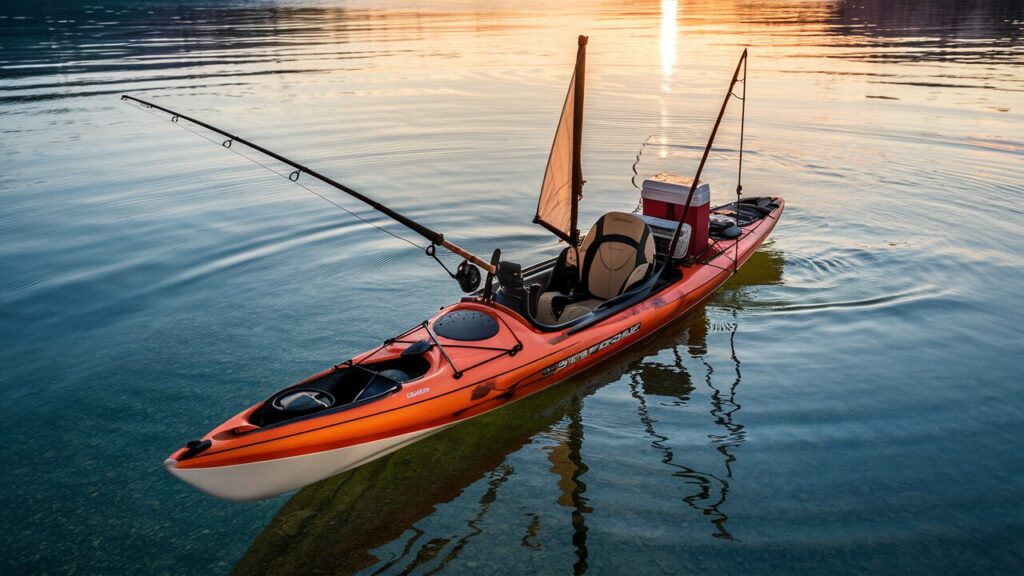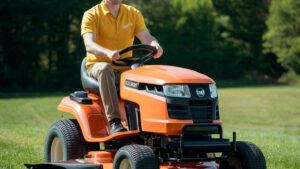To determine the right size fishing kayak, consider your weight, gear, and fishing style. Check manufacturer’s recommendations for weight capacity.
When choosing a kayak, prioritize stability for a better fishing experience. Ensure you can comfortably maneuver and transport the kayak. Familiarize yourself with kayak dimensions and features to make an informed decision. Research different kayak sizes to find one that suits your needs.
Prioritize comfort and functionality when selecting a fishing kayak. Size matters when it comes to enjoying a successful and enjoyable fishing trip.
Key Factors In Kayak Size Selection
When choosing a fishing kayak, consider the purpose and type of fishing you’ll be doing. Sit-on-top kayaks are popular for their stability and ease of use. Your body size and weight play a crucial role in selecting the right kayak size. Additionally, consider the weight distribution and storage options to accommodate your fishing gear. Paddle performance and stability are essential for a smooth fishing experience. Depending on your angling style, you may prefer a kayak with features for standing or bow storage. Always check the weight capacity of the kayak to ensure safety on the water. Explore popular brands and their kayak sizes to find the best fit for your fishing adventures.
Kayak Length And Its Impact
When choosing a fishing kayak, consider the advantages of longer kayaks, as they offer increased speed and better tracking in the water. Longer kayaks also provide more storage space for your fishing gear and better stability, making them suitable for open waters and longer fishing trips. On the other hand, shorter kayaks are more maneuverable and easier to transport and store. They are ideal for fishing in smaller bodies of water and narrow creeks or rivers. Additionally, shorter kayaks are often lighter and more affordable, making them a practical choice for beginner anglers.
Width And Stability Considerations
Understanding Kayak Stability: Fishing kayaks are remarkably stable. In general, wider kayaks are more stable and can support more capacity, which is often advantageous when fishing. However, width is far from the only factor affecting stability.
Width vs. Performance: While wider kayaks provide better stability, they may sacrifice some performance and speed. Narrower kayaks, on the other hand, offer better maneuverability and speed but may compromise stability, especially for beginners.
Weight Capacity And Gear Storage
Ensure your fishing kayak suits your needs by considering weight capacity for gear storage. Opt for a kayak size that accommodates your fishing equipment and ensures ample space for storage during your fishing adventures.
| Weight Capacity and Gear Storage |
| When choosing a fishing kayak, consider the weight capacity to accommodate your gear and body weight. Ensure to calculate your load properly to prevent overloading. |
| Storage options for anglers vary from built-in compartments to external crates or deck bags for organizing and accessing gear easily during fishing trips. |
The Role Of Hull Design
For fishing, the right kayak size depends on your weight, height, and intended use. Opt for stability and weight capacity in a kayak hull design that suits your needs best. Testing different sizes is crucial to finding the perfect fishing kayak.
| The hull design of a fishing kayak plays a crucial role in its performance on the water. |
| Hull Shapes: Different hull shapes affect how the kayak moves through the water. |
| Water Performance: Testing various hull designs can help determine stability and maneuverability. |

Personal Comfort And Seating
When choosing a fishing kayak, it’s crucial to consider the ergonomics of kayak seating to ensure personal comfort during long hours on the water. Additionally, the importance of a test paddle cannot be overstated. By testing different kayak sizes and seat designs, anglers can determine the ideal fit for their individual needs and preferences.
Paddle Sizing And Kayak Control
When selecting a paddle length, consider the width of your kayak and your height. A longer paddle is needed for wider kayaks and taller individuals. Lightweight materials such as fiberglass or carbon fiber are ideal for reduced fatigue during long paddling sessions. Additionally, a lighter paddle is easier to handle and control. It’s important to find a balance between stiffness and flexibility in the paddle shaft for efficient propulsion and reduced strain on your body.
Safety Features And Precautions
When choosing a fishing kayak, consider the weight distribution and storage options. The paddle performance and stability are crucial for fishing. Sit-on-top kayaks are popular for their stability and ease of use. It’s important to have essential safety gear and know how to handle emergency situations while fishing. When it comes to kayak size, consider your height and weight for the right fit. Additionally, the type of kayak and paddle size are important for a successful fishing experience. Moreover, various reputable brands offer fishing kayaks with different stability levels and features. It’s essential to prioritize safety and stability when choosing a fishing kayak to enjoy your fishing adventures.
Popular Brands And Models
Choosing the right size fishing kayak is crucial to ensure comfort and safety on the water. Popular brands and models like Old Town, Lifetime, and Pelican offer a range of sizes to accommodate different paddlers and fishing styles. Consider factors like weight distribution, storage, and paddle performance when selecting the appropriate size for your needs.
| Popular Brands and Models |
| When choosing a fishing kayak, consider top brands like Old Town, Lifetime, and Pelican. |
| Comparing Top Manufacturers |
| Research various models from different manufacturers to find the best fit for your needs. |
| Reading Reviews and Comparisons |
| Read customer reviews and product comparisons to make an informed decision on your purchase. |
Budgeting For Your Fishing Kayak
Determine the right fishing kayak size by considering weight distribution, storage, and paddle performance. Opt for a stable kayak with adequate storage for a comfortable fishing experience. Test the kayak’s stability and hull design before making your final choice.
| Topic | Information |
|---|---|
| Recommended Kayak Length by Paddler’s Height | There are various charts available online to determine the recommended kayak length based on your height. These charts suggest that for a paddler who is 6 feet or taller, a kayak length of 12 to 13 feet is recommended. For someone between 5’6″ and 6 feet, a kayak length of 10 to 12 feet is recommended. For someone under 5’6″, a kayak length of 9 to 10 feet is recommended. |
| How much does a fishing kayak cost? | The cost of a fishing kayak depends on the type, quality, and features. Entry-level fishing kayaks can cost around $300, while high-end models can cost up to $3,000 or more. However, most anglers can find a good quality fishing kayak for around $800 to $1,200. |
| What type of kayak is good for fishing? | Sit-on-top kayaks are generally more popular for fishing because they are more stable and allow for easy access on and off the kayak. They also provide ample space for gear and offer the option to stand up while fishing. However, sit-inside kayaks can also be used for fishing, especially in colder weather conditions. |
| What size fishing kayak do I need? | The size of the fishing kayak you need depends on your height, weight, and the type of water you plan to fish in. As a general rule, for someone over 6 feet tall, a kayak length of 12 to 13 feet is recommended. For someone between 5’6″ and 6 feet, a kayak length of 10 to 12 feet is recommended. For someone under 5’6″, a kayak length of 9 to 10 feet is recommended. Additionally, wider kayaks are more stable and can support more weight capacity, which is often advantageous for fishing. |
| How stable is a fishing kayak? | Fishing kayaks are generally designed to be very stable. Wider kayaks are more stable and can support more weight capacity, which is often advantageous when fishing. However, width is not the only factor that determines stability. Factors such as the kayak’s shape, hull design, and center of gravity also play a role in its stability. |
| What are the safety features for fishing kayaks? | Fishing kayaks should have safety features such as a personal flotation device (PFD), paddle leash, and a whistle. Some fishing kayaks also have additional safety features such as rod holders, fish finders, and anchor trolleys. It’s important to always wear a PFD and have a whistle on hand in case of an emergency. |
| What size of paddle do I need for a fishing kayak? | The size of the paddle you need depends on your height and the width of your kayak. A general rule is that the paddle should be 8 to 10 inches longer than the width of your kayak. For example, if your kayak is 28 inches wide, a paddle length of 220 to 240 cm is recommended. |
| Cost vs. Quality | When budgeting for a fishing kayak, it’s important to balance cost and quality. While it may be tempting to opt for a cheaper kayak, it’s important to consider the quality of the kayak and its features. A higher quality kayak may cost more upfront, but it can provide a more enjoyable and safer fishing experience in the long run. Look for kayaks from popular brands such as Old Town, Lifetime, and Pelican, and read reviews from other anglers to find the best value in the market. |
Frequently Asked Questions
How Big Of A Kayak Do I Need For Fishing?
For fishing, a kayak around 12 feet is suitable, providing a good balance of stability and maneuverability. Consider your weight and the gear you’ll carry. A wider kayak can offer more stability, but hull design also affects stability. Test a kayak before buying.
What Size Kayak Do I Need For My Height?
Choose a kayak that’s 10-12 feet long if you’re under 5’5″, 12-14 feet for 5’5″-6’2″, and 14+ feet for over 6’2″.
Is A 10 Foot Kayak Big Enough?
Yes, a 10-foot kayak can be big enough for many people, especially beginners and those planning to kayak on calm waters. However, for taller individuals or those needing more storage, a longer kayak may be preferable. Always consider your specific needs and preferences when choosing a kayak size.
How Big Of A Kayak Do I Need For My Weight?
Choose a kayak based on weight. Match your weight to the kayak’s weight capacity for safety and stability.
Conclusion
Choosing the right size fishing kayak can make all the difference in your fishing experience. It’s important to consider your height, weight, and fishing needs when selecting a kayak. Additionally, factors such as weight distribution, storage, paddle performance, and safety features should also be taken into account.
By doing your research and understanding what size and type of kayak will best suit your needs, you can ensure an enjoyable and successful fishing trip. So, get out there and start exploring the waters in your perfectly sized fishing kayak!








